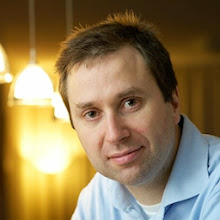What is Self-plagiarism? (2)
As the discussion continues about what exactly constitutes self-plagiarism, acceptable re-use, and generally 'good publication ethics', it seems a good idea - in the hope of separating opinions from facts - to collect some more authoritative sources on the topic.
- The Committee on Publication Ethics (COPE) always seems to me to care mostly about combating predatory publishing houses (and they do great work in that arena), but they have also set up some guidelines for authors. On the topic of self-publication they say
Multiple publications arising from a single research project should be clearly identified as such and the primary publication should be referenced. Translations and adaptations for different audiences should be clearly identified as such, should acknowledge the original source, and should respect relevant copyright conventions and permission requirements. (art. 4.6)
- Ron Ritzen pointed me to an editorial of The Lancet in 2009, which gives (in my opinion) a balanced view on self-plagiarism. The central statement is Deception is the key issue in all forms of self- plagiarism (...), meaning that whether a similarity constitutes self-plagiarism depends on whether deception is involved.
- Although individual researchers should not be considered authoritative on a topic of self-plagiarism, Nijkamp himself is probably quickly gaining a vast amount of knowledge on this topic. Since he is also a central element in this discussion, it is interesting to note his defense. As regards the claim of self-plagiarism, the defense is organized around two arguments: first the constraints of language and topic (see below), and secondly the existence of 'halffabrikaten'. ('Halffabrikaten' refers to intermediate products as they are passed from one manufacturer to another, such as components or basic materials such as metal sheets or polymer pallets; is there a good english word for that?) In Nijkamp's defense, the 'halffabrikaten' are a common component of current publication culture, and they will have non-trivial overlap with other 'halffabrikaten' and with the 'final products' as a matter of course.
- How does one distinguish, in concrete situations, between duplication that is the result of the limits of language and the constraints of the topic, and duplication that indicates a real copying of creative work?
At one end of the spectrum, any two english articles - any two articles - will share at least 90% of their words. And: This sentence has been written before. I mean it: the sentence "This sentence has been written before" has been written before - Google alone gives five cases. Does my writing it here constitute plagiarism? I can honestly vouch that I didn't copy the sentence - I first wrote it (i.e. created it myself), then copy-pasted it into a Google search box, and indeed five hits came up. There are many obvious situations, like this, in which multi-word similarities are perfectly compatible with honest creation.
At the other end, someone who copies a multi-page article lock, stock, and barrel (maybe even the biographical details? :-) can obviously not claim to have created themselves.
(The remark about the bio has a barb to it - Frank van Harmelen pointed out that the Volkskrant list of Nijkamp's 'similarities' includes a biographical description of Nijkamp himself. Is it self-plagiarism to describe your own career twice in the same words? A better proof of the limitations of similarity-detection software is hard to give.)

